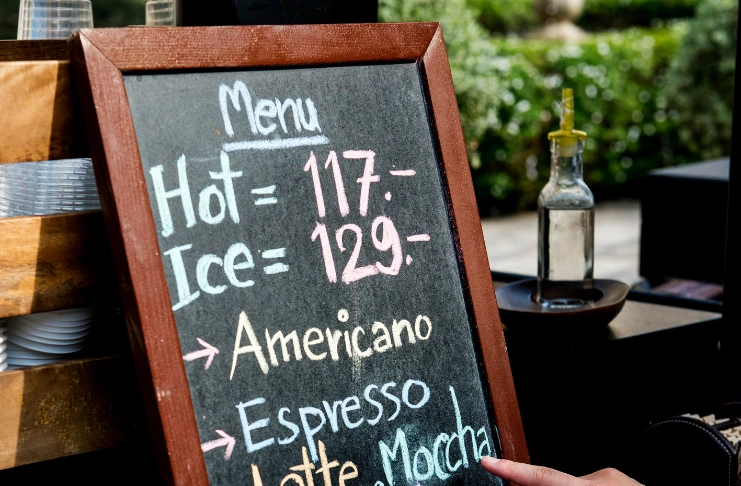In the high-stakes world of the restaurant industry, where margins are notoriously thin and competition fierce, a seemingly simple question haunts every owner and chef: “What should we charge for this dish?” This inquiry is a fundamental part of a comprehensive restaurant pricing strategy.
Behind this deceptively straightforward question lies a complex equation that can determine whether your restaurant thrives or joins the 60% of establishments that close within their first year due to high food costs and several unsatisfied customers. While passion for food and hospitality might bring you into the restaurant business, it’s different menu pricing strategies that keep your doors open.
Consider this: the average restaurant’s profit margin hovers between 3-5%, leaving precious little room for pricing missteps. Yet many restaurateurs still rely on gut feelings or simple cost-plus formulas when setting menu prices—approaches that fail to account for overall food costs and prime costs leave significant revenue on the table, silently eroding profitability plate by plate.
In an era where food costs have risen by nearly 20% in just the past two years, where labor expenses continue to climb, and where diners scrutinize value more carefully than ever before, yesterday’s pricing strategies no longer suffice. The restaurants that survive—and thrive—are those that approach menu pricing as both art and science, balancing hard numbers with customer psychology.
This comprehensive guide pulls back the curtain on menu pricing methods and strategies that go beyond basic food cost percentages. We’ll explore the psychological triggers that influence perceived value, examine how strategic menu design can guide customers toward higher-margin items, and reveal how data-driven pricing can help you weather cost fluctuations without alienating your loyal customer base.
Whether you operate a quick-service establishment, a neighborhood bistro, or a fine dining destination, mastering the nuances of menu pricing is essential to your long-term success. Join us as we navigate the delicate balance between profitability and value perception—where pennies saved and dollars earned can make all the difference in an industry where every detail matters.
The Importance of Pricing Menu Items Strategically

Strategically pricing menu items is essential for a restaurant’s profitability, competitiveness, and customer satisfaction. It’s not just about covering ingredient costs and prime costs— it’s about crafting prices that reflect brand value, appeal to target demographics, and drive profitable decision-making. A well-thought-out pricing structure ensures financial stability, attracts customers, and influences buying behavior, all while supporting the restaurant’s long-term goals.
Without a pricing strategy, restaurants risk undercharging for high-effort items or overpricing menu options that alienate customers. A strategic approach accounts for food costs, competitor pricing, customer psychology, and profit margins, creating a balanced and optimized menu that supports sustainable growth.
A case study by Pricing Solutions demonstrated that implementing a strategic pricing approach led to a 5% recovery in annual revenue and a 2–3% increase in profit margins for a restaurant client. Additionally, a study published in the International Journal of Accounting & Finance in Asia Pacific found that pricing perception is the most influential factor in driving customer satisfaction for Foodpanda Malaysia, with delivery experience and food quality also playing significant roles.
The study emphasizes that pricing perception indirectly boosts satisfaction by enhancing perceived value, underscoring the importance of aligning pricing strategies with customer expectations to improve overall satisfaction.
EXPERT INSIGHT
| According to NetSuite, menu psychology plays a crucial role in shaping customer perceptions and boosting restaurant profitability. Techniques like charm pricing (e.g., pricing at $9.99 instead of $10) create the illusion of better value, making customers more likely to choose higher-priced items. Similarly, decoy pricing, where a high-priced item makes other options seem more affordable, encourages customers to opt for mid-range options, increasing overall sales.These pricing strategies not only guide customer decisions but also enhance their satisfaction by aligning with their value perceptions. When done right, it fosters customer loyalty and helps increase profitability. By leveraging menu psychology, restaurants can improve both financial performance and customer experience. |
In short, strategic pricing isn’t just an accounting exercise—it’s a crucial element of operational success and brand storytelling in the restaurant industry, particularly when managing total food costs.
Restaurant menu pricing refers to the structured process of determining how much to charge customers for each item on your menu. It’s more than just covering the cost of ingredients—it also includes a calculated markup that accounts for prime costs like labor, rent, marketing, and desired profit margins.
Strategic menu pricing helps ensure financial stability, aligns with brand positioning, and appeals to customer expectations. Done right, it transforms your menu into a powerful marketing and profitability tool that influences purchasing decisions and shapes the dining experience.
To implement strategic pricing effectively, it’s essential to understand key metrics (such as food cost percentage). This foundational element not only helps ensure profitability but also allows for better control over your menu’s pricing structure. By knowing the portion of your revenue dedicated to purchasing ingredients, you can make informed decisions that balance cost recovery with achieving your target food cost percentage and customer satisfaction, ensuring your menu pricing is both competitive and sustainable.
Understanding Food Cost Percentage
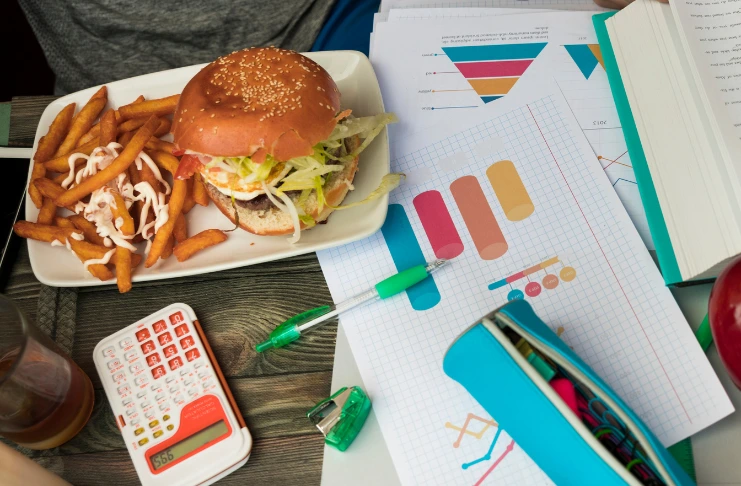
One of the foundational elements in menu pricing is understanding how to calculate food cost percentage, as well as knowing your food cost percentage. This metric indicates the portion of your sales revenue that goes toward purchasing ingredients and covers actual costs. The formula to calculate food cost percentage is:
Food Cost Percentage = (Cost of Goods Sold / Revenue) x 100
For instance, if a dish costs $5.79 to make and is sold for $18, the food cost percentage is approximately 32.2%. Industry standards suggest maintaining a food cost percentage between 28% and 35%, depending on your business model and cuisine type. Keeping your food cost percentage within this range helps ensure that you’re generating enough revenue to cover other operational expenses like labor, rent, and utilities.
Additionally, understanding food cost percentage enables smarter decision-making when selecting suppliers, managing inventory, and optimizing portion control. It’s also useful when assessing promotional discounts to ensure they don’t eat into your profits. While it’s easy to overlook small ingredients, even minor miscalculations can add up across hundreds of dishes.
Calculating Menu Prices Based on Food Cost
To price your menu items effectively, you can use a simple yet powerful formula that helps ensure profitability while staying competitive and customer-friendly. This formula takes into account your food costs and desired profit margins, allowing you to set prices that both cover expenses and contribute to sustainable revenue growth:
Menu Price = Raw Food Cost / Ideal Food Cost Percentage
For example, if the raw food cost of a dish is $4 and your ideal food cost percentage is 28%, the menu price would be approximately $14.29. This formula helps you set the ideal menu item price that not only covers costs but also contributes to a sustainable profit margin.
It’s important to be consistent with your calculations across the entire menu and to regularly update ingredient costs to reflect changes in supplier pricing or seasonal availability. Also, consider hidden costs like garnishes, cooking oils, and spices that can cumulatively affect your prime costs and food cost percentage if left unaccounted for. Menu pricing is never a one-time task—it’s a living, breathing part of your operations.
Incorporating Gross Profit Margin
Gross profit margin focuses on the profit made from each menu item after covering only the cost of goods sold (COGS)—that is, the direct cost of ingredients. It excludes other operating expenses such as labor, rent, utilities, and marketing. This metric is crucial for understanding how much money your restaurant earns from the food itself before overhead costs are factored in. The formula to calculate gross profit margin is:
Gross Profit Margin = (Selling Price – COGS) / Selling Price x 100
For instance, if a dish sells for $14.50 and the COGS is $4, the gross profit margin is approximately 72%. High-margin items allow you to cover fixed costs more easily and boost your overall food sales. And create opportunities for reinvestment.
By consistently tracking gross profit margins across different menu categories, restaurateurs can identify which offerings are underperforming. This analysis informs pricing strategy adjustments, portion size tweaks, or recipe reformulation to maximize profitability. It’s not just about making a profit—it’s about understanding which items carry your business.
Menu Engineering: Analyzing Item Performance
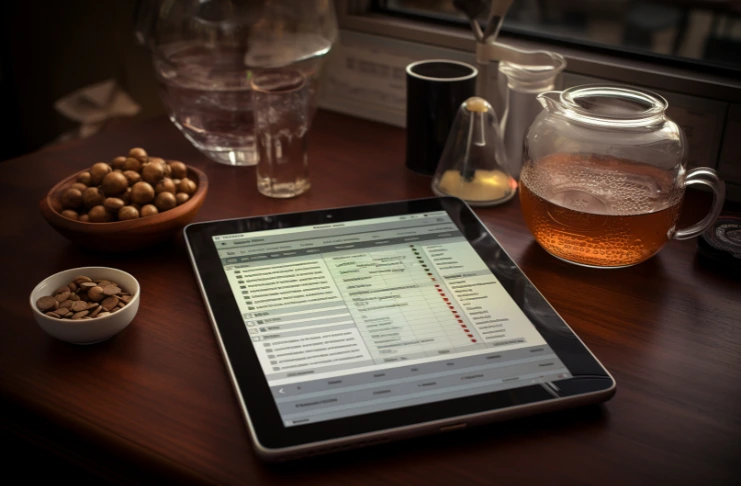
Menu engineering involves analyzing and categorizing menu items based on their sales volume (popularity) and contribution margin (profitability). This strategic framework helps restaurant owners and managers make data-driven decisions to optimize their menus for better performance. The four main menu item categories are:
Stars (High Popularity, High Profitability)
These are your best-performing items—they sell well and generate strong profit margins. Stars are typically customer favorites that also make financial sense for your business. They should be prominently featured on the menu, possibly with visual cues or special highlights, and kept consistent in terms of quality and availability.
Plow Horses (High Popularity, Low Profitability)
Plow Horses are popular with customers but offer lower profit margins. These items bring in volume but not necessarily revenue. Consider ways to increase profitability, such as tweaking the recipe to reduce food costs, adjusting portion sizes, or bundling them with more profitable add-ons, while maintaining their appeal.
Puzzles (Low Popularity, High Profitability)
These items are profitable but not ordered often. The key with Puzzles is to increase their visibility and appeal. This can be done through better menu placement, more enticing descriptions, upselling by staff, or pairing them with popular sides or drinks. If customers realize their value, Puzzles can potentially become Stars.
Dogs (Low Popularity, Low Profitability)
Dogs are the underperformers—they neither sell well nor generate significant profit. These items should be re-evaluated. Unless they serve a specific strategic or branding purpose, it’s often best to reformulate, reposition, or remove them from the menu entirely to make room for better-performing items.
By analyzing sales data and categorizing items accordingly, you can make informed decisions about which items to promote, rework, or remove. For example, consider repositioning a “Puzzle” dish to a more prominent spot on the menu or enhancing its appeal through better descriptions and visuals. Likewise, evaluate if “Dogs” are worth retaining or should be replaced.
Menu engineering also highlights the importance of smart layout design and using visual cues (like boxes or icons) to draw attention to “Stars.” Training servers to upsell high-margin items further enhances menu performance. It’s a blend of data and creativity—a strategic art that turns your menu into a money-making asset.
Dynamic Pricing: Adjusting Prices Based on Demand

Dynamic pricing involves changing menu prices based on factors like time of day, demand, or external conditions such as weather or holidays. For example, Wendy’s announced plans to implement dynamic pricing in 2025, adjusting prices during peak hours. This strategy, often powered by AI and digital menu boards, can optimize revenue during high-demand periods while attracting more customers during slower times.
However, it’s crucial to strike a balance and communicate changes transparently to avoid alienating loyal customers. Restaurants should use data analytics to identify demand trends and evaluate the effectiveness of dynamic pricing over time. Done right, dynamic pricing turns slow hours into opportunities and peak periods into profit powerhouses.
Bundle Pricing: Offering Value Meals
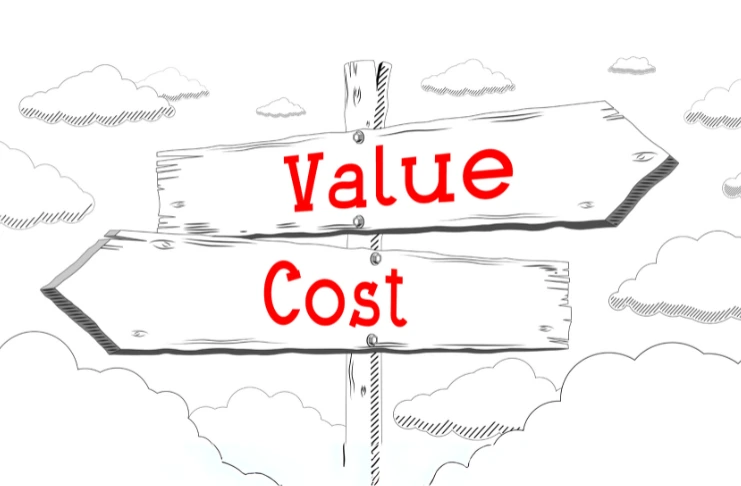
Bundle pricing combines multiple items into a single package at a discounted rate. This strategy encourages customers to purchase more while perceiving greater value. For instance, a burger, fries, and drink combo can be priced lower than if purchased individually, driving higher average check values.
Bundle pricing also allows you to move inventory efficiently and create upselling opportunities by including high-margin items in the bundles. Moreover, it simplifies decision-making for customers, reducing menu anxiety and speeding up order times. For families or groups, bundle deals are often a deciding factor.
Value-Based Pricing: Aligning Price with Perceived Value
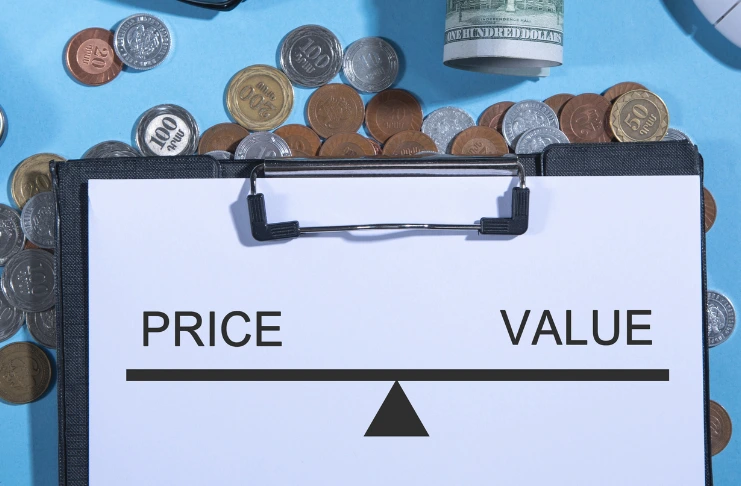
Value-based pricing sets menu prices based on the perceived value to the customer rather than solely on cost. Factors influencing perceived value include ingredient quality, portion cost, presentation, dining experience, ambiance, and brand reputation.
For instance, customers may be willing to pay more for a burger made with organic, locally sourced beef served in a gourmet setting. By understanding your target market and their value perceptions, you can command premium pricing.
Surveys, customer reviews, and competitor benchmarking can offer insight into what your diners value most, enabling better pricing alignment with their expectations. A strong brand can justify higher prices, especially when backed by consistency and quality.
Competitive Pricing: Staying in Line with Market Rates

Competitive pricing involves setting menu prices based on what competitors are charging for similar items. While it’s essential to remain competitive with the market price, blindly matching prices can be risky if it leads to insufficient margins.
Conduct regular competitor analysis and identify where your offerings have unique selling points that justify a price premium. For example, if you offer larger portions, organic ingredients, or a unique ambiance, highlight these factors to support slightly higher prices. Competing on value, not just cost—is key to long-term differentiation.
Psychological Pricing: Leveraging Customer Psychology
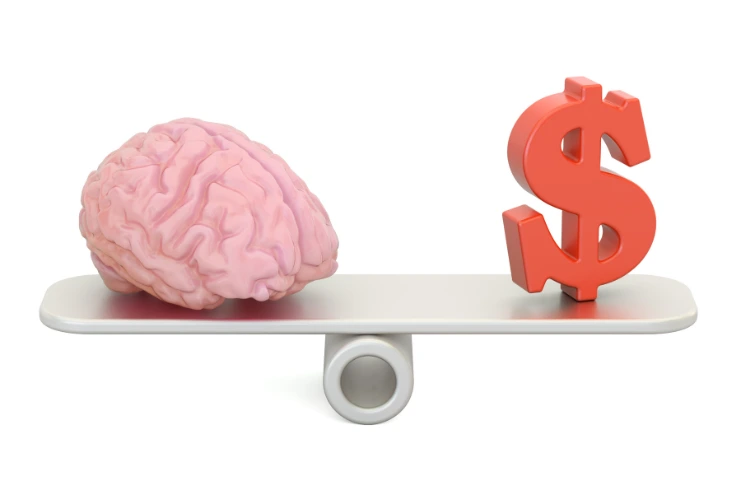
Psychological pricing strategies leverage consumer behavior insights to subtly influence purchasing decisions. One common tactic is charm pricing—ending prices in .99 or .95 instead of rounding up. For example, pricing a dish at $9.99 instead of $10 can make it appear significantly cheaper, even though the actual difference is minimal.
Another approach is “price anchoring,” where placing a high-priced item at the top of the menu makes mid-range options seem more reasonable. Additionally, removing currency symbols ($) and using clean typography can make prices feel less intimidating. These small details can subconsciously steer customer choices in your favor.
Monitoring and Adjusting Prices Regularly

Regularly reviewing and adjusting menu prices is vital to account for changes in ingredient costs, labor expenses, and market trends. Conduct quarterly or biannual pricing audits to help determine menu pricing, analyze sales reports, and consult with kitchen staff to understand preparation complexities.
Make incremental adjustments rather than drastic changes to minimize customer pushback. Integrate feedback from servers and customers to ensure changes align with perceived value. Additionally, technology like POS analytics can flag declining profit margins, prompting timely pricing tweaks. A responsive pricing strategy shows you’re tuned in to both your business and your guests.
Real-World Impact: How Strategic Pricing Drives Profit

Strategic pricing isn’t just theory—it has proven, measurable effects on restaurant profitability. According to Deloitte Consulting LLP, restaurants leveraging strategic pricing tools, such as their Strategic Pricing Analyzer, have reported a 1-3 percentage point improvement in profit margins. This improvement comes from aligning menu prices more closely with consumer willingness to pay, allowing restaurants to maximize their revenue potential without overpricing or underpricing their offerings.
These restaurants fine-tune their menu pricing to strike the right balance between value perception and revenue generation. This real-world data underscores the importance of pricing as both an art and a science—an essential lever for improving profitability while maintaining guest satisfaction.
By understanding customer price sensitivity and optimizing menu prices based on this data, restaurants, while maintaining customer satisfaction, can also contribute to a profitable restaurant.
Conclusion
Effective restaurant menu pricing strategies extend far beyond simple calculations; they encompass total cost and are integral to covering costs, boosting profits, and communicating your restaurant’s value proposition. As we’ve explored throughout this guide, the most successful pricing approaches blend analytical rigor with customer psychology, creating a balance that satisfies both your bottom line and your guests’ expectations.
By understanding food cost percentages, employing various pricing models like price anchoring and bundle pricing, and continuously analyzing menu performance through tools like menu engineering matrices, you can develop a pricing strategy that not only ensures profitability but enhances your guests’ perception of value. Remember that achieving your ideal gross profit margin is key, and pricing is never static; it’s a dynamic element that requires regular evaluation and refinement.
Stay informed about industry trends, experiment with innovative pricing tactics, and be willing to adapt your approach to meet evolving customer expectations and market conditions. The restaurants that thrive in challenging economic environments are those that view pricing adjustments not as necessary evils but as opportunities to reassess and strengthen their overall value proposition.
Strategic pricing is not just a financial decision—it’s a a core part of your brand and guest experience, particularly in fine dining restaurants. When aligned with your concept, cuisine, and target audience, your pricing strategy becomes a powerful communication tool that reinforces your restaurant’s identity and positioning in the marketplace.
As you implement the strategies we’ve discussed, approach pricing with both confidence and curiosity. Test new approaches that help achieve the ideal gross profit margin, measure their impact, and refine based on results. Seek feedback from both your team and your guests, and don’t be afraid to make bold moves when data supports them.
Smart pricing transforms your menu into a powerful tool for growth, differentiation, and customer satisfaction—one that can help your restaurant not just survive but thrive amid competition and cost pressures. In an industry where success depends on countless variables, strategic menu pricing remains one of the few factors entirely within your control—and one of your greatest opportunities to build a sustainable, profitable business that stands the test of time.
Frequently Asked Questions
1. What is the best pricing strategy for a restaurant?
The best pricing strategy varies by restaurant, but a combination of cost-plus pricing and value-based pricing often works well. It ensures costs are covered while aligning prices with customer perceptions.
2. What are the 4 types of pricing?
The four main pricing types are cost-plus pricing, value-based pricing, competitive pricing, and dynamic pricing. Each method suits different goals and market positions.
3. Which pricing approach is for a restaurant?
Restaurants commonly use cost-plus pricing for basic margin protection, but also apply value-based and menu engineering strategies for maximizing profitability and customer appeal.
4. What are the three ways of pricing menu items?
Menu items can be priced using food cost percentage, gross profit margin, or perceived customer value. Many restaurants use a hybrid of all three for balance.
5. What is the rule of thumb for restaurant pricing?
A typical rule of thumb is to set menu prices so that food costs are about 28–35% of the selling price. This allows room for overhead and profit.
6. How to calculate restaurant food cost?
Restaurant food cost is calculated using the formula:
Food Cost Percentage = (Cost of Goods Sold / Total Food Sales) × 100
7. How do restaurants set their menu prices?
Restaurants set menu prices based on ingredient costs, desired profit margins, competitor pricing, and customer value perception. Pricing is regularly reviewed for market shifts.
8. What is the best pricing strategy for restaurants?
The best strategy combines cost-based pricing for financial safety with value-based and psychological pricing to boost customer appeal and perceived worth.
9. What is the markup on a restaurant menu?
The markup on restaurant menu items typically ranges from 200% to 300%, meaning a dish that costs $5 to make might be priced between $15 and $20.
10. What is the menu cost price?
Menu cost price refers to the total ingredient cost required to prepare a specific dish. It forms the base for setting the selling price.
11. What percentage should food cost be in a restaurant?
The ideal food cost percentage for a restaurant is generally between 28% and 35%, though fine dining may allow for lower margins due to higher perceived value.
12. How to do cost control in a restaurant?
Cost control involves tracking inventory, minimizing waste, negotiating with suppliers, optimizing portion sizes, and regularly reviewing menu profitability and pricing.


